| [1] 刘小舟,王勇,吕培军.牙科可切削陶瓷材料国内临床应用及研究进展[J].硅酸盐通报,2009,8(28):212-214.[2] Sailer I, Pjetursson BE, Zwahlen M, et al. A systematic review of the survival and complication rates of all-ceramic and metal-ceramic reconstructions after an observation period of at least 3 years. Part II: fixed dental prostheses. Clin Oral Implants Res. 2007;18(3):86-96. [3] Kitaoka A, Akatsuka R, Kato H, et al. Clinical Evaluation of Monolithic Zirconia Crowns: A Short-Term Pilot Report. Int J Prosthodont. 2018; 31(2):124. [4] 杨秀梅.氧化锆全瓷和钴铬合金冠修复对基牙牙周指数及致病菌的影响[J].世界最新医学信息文摘,2018,18(30):68-69.[5] 李鸿飞,吴祥冰,任伟.不同修复材料应用于前牙牙冠延长术后冠修复患者中的疗效对比[J].中国临床研究,2018,31(1):102-104.[6] Miyazaki T, Nakamura T, Matsumura H, et al. Current status of zirconia restoration. J Prosthodont Res. 2013;57(4):236-261. [7] 朱东彬,宋艳军,梁金生,等.齿科用氧化锆陶瓷韧性研究进展[J].无机材料学报,2018,33(4):363-372.[8] Sulaiman TA, Abdulmajeed AA, Donovan TE, et al. Fracture rate of monolithic zirconia restorations up to 5 years: a dental laboratory survey. J Prosthet Dent. 2016;116(3):436-439. [9] Yu Z, Mai Z, Barani A, et al. Fracture-resistant monolithic dental crowns. Dental Materials Official Publication of the Academy of Dental Materials. 2016;32(3):442-449. [10] 刘诗铭,刘峰.椅旁CAD/CAM修复材料分类和新进展[J].口腔医学, 2017, 37(8):673-677.[11] Ersoy NM, Aydo?du HM, De?irmenci BÜ, et al. The effects of sintering temperature and duration on the flexural strength and grain size of zirconia. Acta Biomater Odontol Scand. 2015;1(2-4):43-50. [12] Kaizer MR, Gierthmuehlen PC, Dos Santos MB, et al. Speed sintering translucent zirconia for chairside one-visit dental restorations: Optical, mechanical, and wear characteristics. Ceram Int. 2017;43(14):10999. [13] ISO 14705, Fine ceramics(advanced ceramics, advanced technical ceramics)-Test method for hardness of monolithic ceramics at room temperature, 2008. [14] 陈士冰,王世峰,李亮.烧结温度对3Y-TZP陶瓷结构与力学性能的影响[J].硅酸盐通报,2011,30(3):724-727,735.[15] ISO 6872, Dentistry-Ceramic Materials, 2008. [16] 蒋媛,杨杨.二氧化锆的临床研究进展[J].临床口腔医学杂志, 2017,33(2): 125-127.[17] 包旭东,高学军.椅旁CAD/CAM数字化修复[J].中华实用口腔科杂志, 2016, 9(6):321-325.[18] Habib SR. Digital microscopic evaluation of vertical marginal discrepancies of CAD/CAM fabricated zirconia cores. Biomed Tech (Berl). 2018. pii: /j/bmte. ahead-of-print/bmt-2017-0234/bmt-2017- 0234. xml. doi:10.1515/ bmt-2017-0234. [Epub ahead of print][19] 王林虎,郭家平.CEREC椅旁CAD/CAM诊室技术25年的研究进展[J].国际口腔医学杂志,2012,39(1):124-127.[20] Renjo MM, ?urkovi? L, Štefan?i? S, et al. Indentation size effect of Y-TZP dental ceramics. Dent Mater. 2014;30(12):e371-e376. [21] 王继辉,舒庆琏.结构陶瓷断裂韧性测试方法的研究[J].武汉理工大学学报, 1997,19(2):83-87.[22] 程绮婷,赵克,张新平.牙科陶瓷力学性能与可靠性的研究方法[J].中华口腔医学研究杂志,2009,3(3):331-335.[23] 陈士冰,王世峰,李亮.烧结温度对3Y-TZP陶瓷结构与力学性能的影响[J].硅酸盐通报,2011,30(3):724-727,735.[24] 丁亚通.升温速率对牙科可切削氧化锆陶瓷性能影响的实验研究[D].上海:复旦大学华山医学院,2012.[25] 林映辉.烧结温度对氧化锆基台材料力学性能的影响[D].青岛:口腔临床医学院,2010.[26] 孙蕾,张富强,靳喜海,等.烧结温度对牙科氧化锆陶瓷部分物理机械性能的影响[J].上海第二医科大学学报,2005,25(3):249-251.[27] Li GH, Guo ZY, Chen JH. Properties and microstructure of nano-powder 3 molyttria stabilized tetragonal zirconia polycrystal as dental materials. J Clin Rehabil Tissue Eng Res. 2009;13(42):8277-8279. [28] Liang XJ, Qiu YX, Zhou SX, et al. Preparation and properties of dental zirconia ceramics. Journal of University of Science and Technology Beijing. 2008;15(6):764-768. [29] 樊江源,林婷婷,胡方旋,等.烧结温度对牙科氧化锆增韧氧化铝陶瓷力学性能的影响[J].上海口腔医学,2017,26(2):129-133.[30] 陈莹,顾郁嘉,陈晨,等.烧结次数对齿科氧化锆陶瓷机械性能的影响[J].南京医科大学学报(自然科学版),2017;37(01):117-120.[31] 王兴明,王焕平,刘思琪,等.氧化物着色剂对3Y-TZP陶瓷色度及力学性能的影响[J].机械工程材料,2018,42(4):48-52.[32] Camposilvan E, Leone R, Gremillard L, et al. Aging resistance, mechanical properties and translucency of different yttria-stabilized zirconia ceramics for monolithic dental crown applications. Dent Mater. 2018;34(6):879-890. [33] LM Candido, LN Miotto, LMG Fais, et al. Mechanical and Surface Properties of Monolithic Zirconia. Operative Dentistry. 2018;43(3): e119-e128. [34] Byeon SM, Song JJ. Mechanical Properties and Microstructure of the Leucite-Reinforced Glass-Ceramics for Dental CAD/CAM. J Dent Hyg Sci. 2018;18(1):42-49. [35] Goujat A, Abouelleil H, Colon P, et al. Mechanical properties and internal fit of 4 CAD-CAM block materials. J Prosthet Dent. 2018;384-389. [36] 柳红芹,朱国威.CAD/CAM氧化锆全瓷冠在口腔修复领域中的应用研究[J].遵义医学院学报,2011,34(2):190-193.[37] Denry I, Kelly JR. State of the art of zirconia for dental applications. Dent Mater. 2008;24(3):299-307. [38] 周新燕,张振涛,沙顺萍,等.(ZrO2)0.96(Y2O3)0.03(Al2O3)0.01陶瓷的制备及性能研究[J].稀有金属,2007,31(2):187-191.[39] Harada K, Shinya A, Yokoyama D, et al. Effect of loading conditions on the fracture toughness of zirconia. J Prosthodont Res. 2013;57(2):82-87. [40] Okada T, Shinya A, Yokozuka S. Effects of loading time on fracture toughness with indentation method. Shigaku. 1990;78(3):460-486. [41] Yilmaz H, Aydin C, GulBE. Flexural strength and fracture toughness of dental core ceramics. J Prosthet Dent. 2007;98(2):120-128. [42] Stawarczyk B, Özcan M, Hallmann L, et al. The effect of zirconia sintering temperature on flexural strength, grain size, and contrast ratio. Clin Oral Investig. 2013;17(1):269-274. [43] Casucci A, Mazzitelli C, Monticelli F, et al. Morphological analysis of three zirconium oxide ceramics: Effect of surface treatments. Dent Mater. 2010;26(8):751-760. |
.jpg)
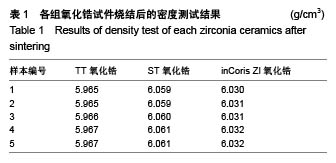
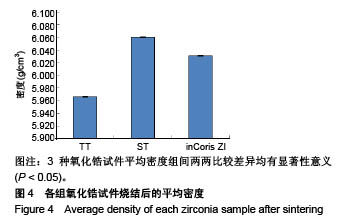
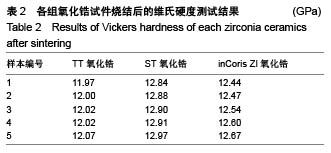
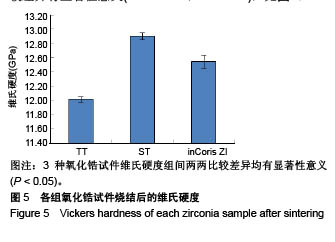
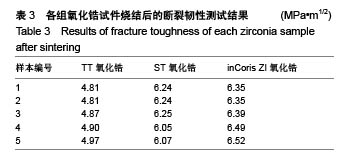
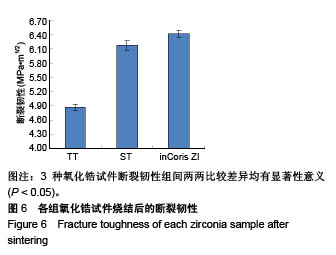
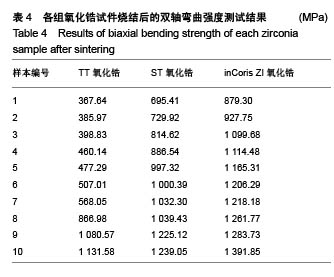
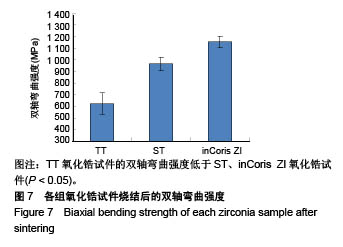


.jpg)